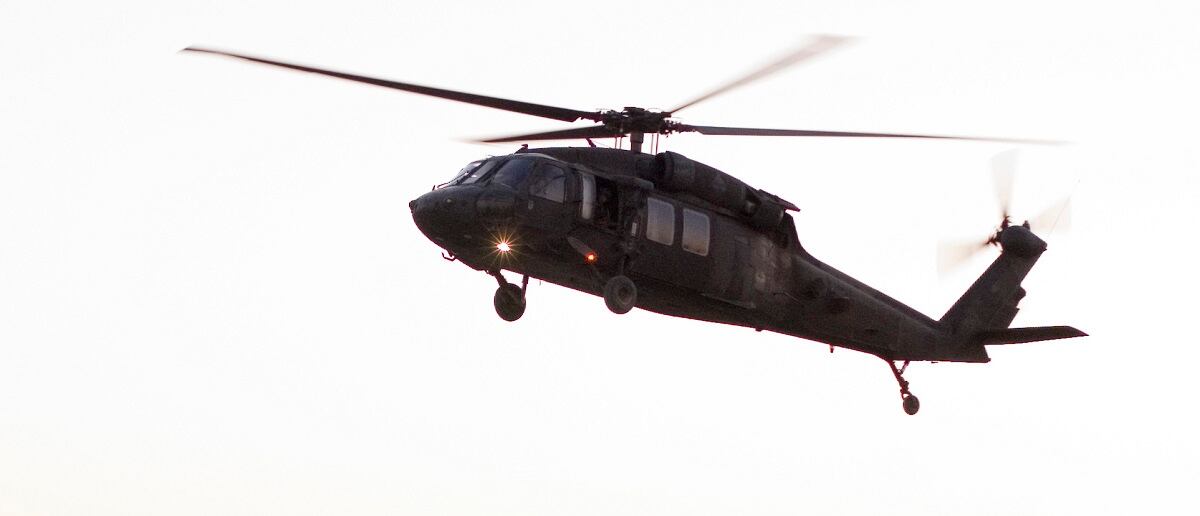WASHINGTON — Cost appears to have played a major role in the Army’s decision to pick GE Aviation’s T901 engine for its future helicopter engine, based on a look at documents laying out the service’s post-award analysis, obtained by Defense News.
Yet, other factors not shown could have also contributed to the Army’s choice, which the Government Accountability Office upheld following a protest from losing team Advanced Turbine Engine Company (ATEC) — a partnership between Honeywell and Pratt & Whitney.
RELATED

The GAO is expected to release a redacted version of its decision next week, which could shed more light on how the Army decided to move forward with GE.
While the cost of GE’S engine seems to have been a deciding factor, the document outlining the service’s criteria to determine a winning engine design to move into the engineering and manufacturing development phase states that “all non-cost/price factors when combined are significantly more important than cost/price factor.”
According to that chart, the Army said it would primarily measure the engine submissions against its engine design and development, followed by cost/price, followed by life-cycle costs and then small business participation in order of importance.
The Army assessed ATEC’s and GE’s technical risk as good and gave ATEC a risk rating of low while it gave GE a risk rating of moderate when considering engineering design and development for each offering.
Both GE and ATEC had moderate risk ratings when it came to engine design and performance.
And while GE received a technical risk rating of moderate for component design and systems test and evaluation, ATEC received low risk ratings for both.
Almost all other technology risk assessments and risk ratings were the same for both engine offerings.
GE scored “outstanding” in platform integration capabilities.
Based off the chart, it appears ATEC won, so its likely the documents are not an exhaustive representation of how the Army decided to move forward with GE.
While both ATEC and GE offered prices within the Army’s requirements, GE came in 30 percent lower in cost.
And according to Brig. Gen. Thomas Todd, the program executive officer for aviation, in an interview with Defense News in April, GE was also working on trying to shrink the timeline within the EMD phase by roughly a year.
But, in ATEC’s view, the charts show it had offered the best value product to the Army.
ATEC’s president, Craig Madden, told Defense News that the company took the Army’s selection criteria laid out in the request for proposals seriously across the board from engineering design and development factors to cost to even small business participation, where it scored higher than GE in the analysis chart.
“We did come in higher in cost but this was considered a best value evaluation and not lowest price, technically acceptable,” Madden said. “I think low price is good for a plastic canteen or a bayonet, it’s not good for a highly technical turbine engine.”
And despite coming in at a higher cost, Jerry Wheeler, ATEC’s vice president said, the up front cost in the EMD phase will be higher but the delta would shrink when considering life-cycle costs of both engine offerings.
Both ATEC and GE received good technical ratings and were given risk ratings of low.
When just going by the chart, GE’s four moderate risk ratings in key categories means “they could have disruption in schedule, increased cost and degradation of performance,” Madden said.
He added ATEC was also focused on lowering risk, so that, although the Army offered incentives to finish the EMD phase earlier than 66 months, ATEC presented a plan to complete at 66 months with a plan to look at acceleration wherever possible.
ATEC is now pushing to be a part of the EMD phase, essentially extending the competition, so that more data on engines can be garnered.
The Army had periodically weighed keeping the EMD phase competitive with two vendors, but ultimately chose to downselect to one.
For GE, the Army made the right decision and had enough data to do so.
“The U.S. Army competitively selected GE’s T901 engine over ATEC T900 engine after more than 12 years of development,” David Wilson told Defense News in a statement.
“Those 12 years included the Advanced Affordable Turbine Engine (AATE) program, during which both companies ran tow full engine tests,” he said.
Additionally, both companies executed a 24-month technology maturation and risk reduction contract where GE self-funded and successfully completed and tested a third engine, a full-sized T901 prototype engine, with successful tests on all components, Wilson said.
“We’ve done three full-engine tests and provided an unprecedented amount of test data to the Army for them to determine which engine was the best to move forward with in EMD,” he added.
Funding a second engine through EMD would cost more than twice as much and delay critical Army modernization by at least two years, Wilson argued.
Jen Judson is an award-winning journalist covering land warfare for Defense News. She has also worked for Politico and Inside Defense. She holds a Master of Science degree in journalism from Boston University and a Bachelor of Arts degree from Kenyon College.








